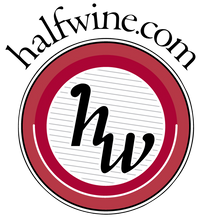Back to: Past Wines Archive
White
Burgundy
Chardonnay
Cork
Dry
Integrated Oak
Vegan
ABV 13%
Tasting notes
Straw gold, the mouth evokes flint and fruit; a classic Pernand. A great aperitif and goes very well with hors d'oeuvres.
Why we recommend this wine
Every time we are in this part of Burgundy we visit and buy wines from Girard. This Pernand-Vergelesses vineyard nestles in a green and peaceful valley between Côte de Nuits and Côte de Beaune, at the foot of the Corton hill. The name of the vineyard "Bois Noël et Belles Filles" refers, poetically speaking, to a certain locality where the young women joyfully went for romantic dates.
The wine
Well-sited vineyard immediately to the west opposite grand cru Corton Charlemagne. The same chalky soil gives great minerality to the wines and provides fine balancing acidity to the lush, honeyed fruit. “Is this really just a village cru? Worthy of a premier cru in my opinion.!" 91/100 Neal Martin robertparker.com
The grapes are fermented in 50HL vats and then matured in Burgundian oak (15% new) for 10 months, with weekly stirring of the lees until the end of malolactic fermentation, usually in March. The wine is then racked and bottled in late summer of the next year.
The wine estate
About five centuries ago, Jean Girard began cultivating vines in Savigny-Les-Beaune. Until the late 90s, Jean-Jacques father, Georges, ran the Domaine but when he bowed out, the sons soon saw that each had his own vision and style, and the domaine was split, pretty much down the middle. Since the split, Jean-Jacques has built his holdings back to its original size of 15 hectares, making it one of the most impressive domains in Savigny. He has been a busy man in the process, adding to his impressive array of Savigny 1er Cru vineyards with parcels in Pernand Vergelesses 1er Cru in red and white, a Beaune 1er Cru ‘Clos du Roi’, some Volnay and Pommard and a little jewel in Corton-Charlemagne. In 2008, his son Vincent joined him on the farm.
Their approach to agriculture is based on a deep respect of the soil and the environment. The wine making approach reconciles traditional know-how and new technologies.
domaine-girard.com
Food and wine
Lemony, minerally and medium bodied, so fish dishes that are not too rich such as grilled crustaceans or sea bass. Refer also to our food and wine pairing guide, click here.
Did you know?
Vineyards were recorded on the hill of Corton in 696 AD though it very likely that they were planted much earlier. In the late 8th century, the land was owned by Holy Roman Emperor Charlemagne who was also King of the Franks. He gave the hill of Corton to the abbey of St. Andoche and ordered that grapevines be planted. Corton was planted first entirely with red grape varieties. Sometime later, Charlemagne's fourth wife, Luitgard, was said to be displeased with red wine drippings on the white beard of the king and ordered that a section of the hill be pulled up and replanted with white grape varieties—a section that is today known as Corton-Charlemagne.
Straw gold, the mouth evokes flint and fruit; a classic Pernand. A great aperitif and goes very well with hors d'oeuvres.
Why we recommend this wine
Every time we are in this part of Burgundy we visit and buy wines from Girard. This Pernand-Vergelesses vineyard nestles in a green and peaceful valley between Côte de Nuits and Côte de Beaune, at the foot of the Corton hill. The name of the vineyard "Bois Noël et Belles Filles" refers, poetically speaking, to a certain locality where the young women joyfully went for romantic dates.
The wine
Well-sited vineyard immediately to the west opposite grand cru Corton Charlemagne. The same chalky soil gives great minerality to the wines and provides fine balancing acidity to the lush, honeyed fruit. “Is this really just a village cru? Worthy of a premier cru in my opinion.!" 91/100 Neal Martin robertparker.com
The grapes are fermented in 50HL vats and then matured in Burgundian oak (15% new) for 10 months, with weekly stirring of the lees until the end of malolactic fermentation, usually in March. The wine is then racked and bottled in late summer of the next year.
The wine estate
About five centuries ago, Jean Girard began cultivating vines in Savigny-Les-Beaune. Until the late 90s, Jean-Jacques father, Georges, ran the Domaine but when he bowed out, the sons soon saw that each had his own vision and style, and the domaine was split, pretty much down the middle. Since the split, Jean-Jacques has built his holdings back to its original size of 15 hectares, making it one of the most impressive domains in Savigny. He has been a busy man in the process, adding to his impressive array of Savigny 1er Cru vineyards with parcels in Pernand Vergelesses 1er Cru in red and white, a Beaune 1er Cru ‘Clos du Roi’, some Volnay and Pommard and a little jewel in Corton-Charlemagne. In 2008, his son Vincent joined him on the farm.
Their approach to agriculture is based on a deep respect of the soil and the environment. The wine making approach reconciles traditional know-how and new technologies.
domaine-girard.com
Food and wine
Lemony, minerally and medium bodied, so fish dishes that are not too rich such as grilled crustaceans or sea bass. Refer also to our food and wine pairing guide, click here.
Did you know?
Vineyards were recorded on the hill of Corton in 696 AD though it very likely that they were planted much earlier. In the late 8th century, the land was owned by Holy Roman Emperor Charlemagne who was also King of the Franks. He gave the hill of Corton to the abbey of St. Andoche and ordered that grapevines be planted. Corton was planted first entirely with red grape varieties. Sometime later, Charlemagne's fourth wife, Luitgard, was said to be displeased with red wine drippings on the white beard of the king and ordered that a section of the hill be pulled up and replanted with white grape varieties—a section that is today known as Corton-Charlemagne.




